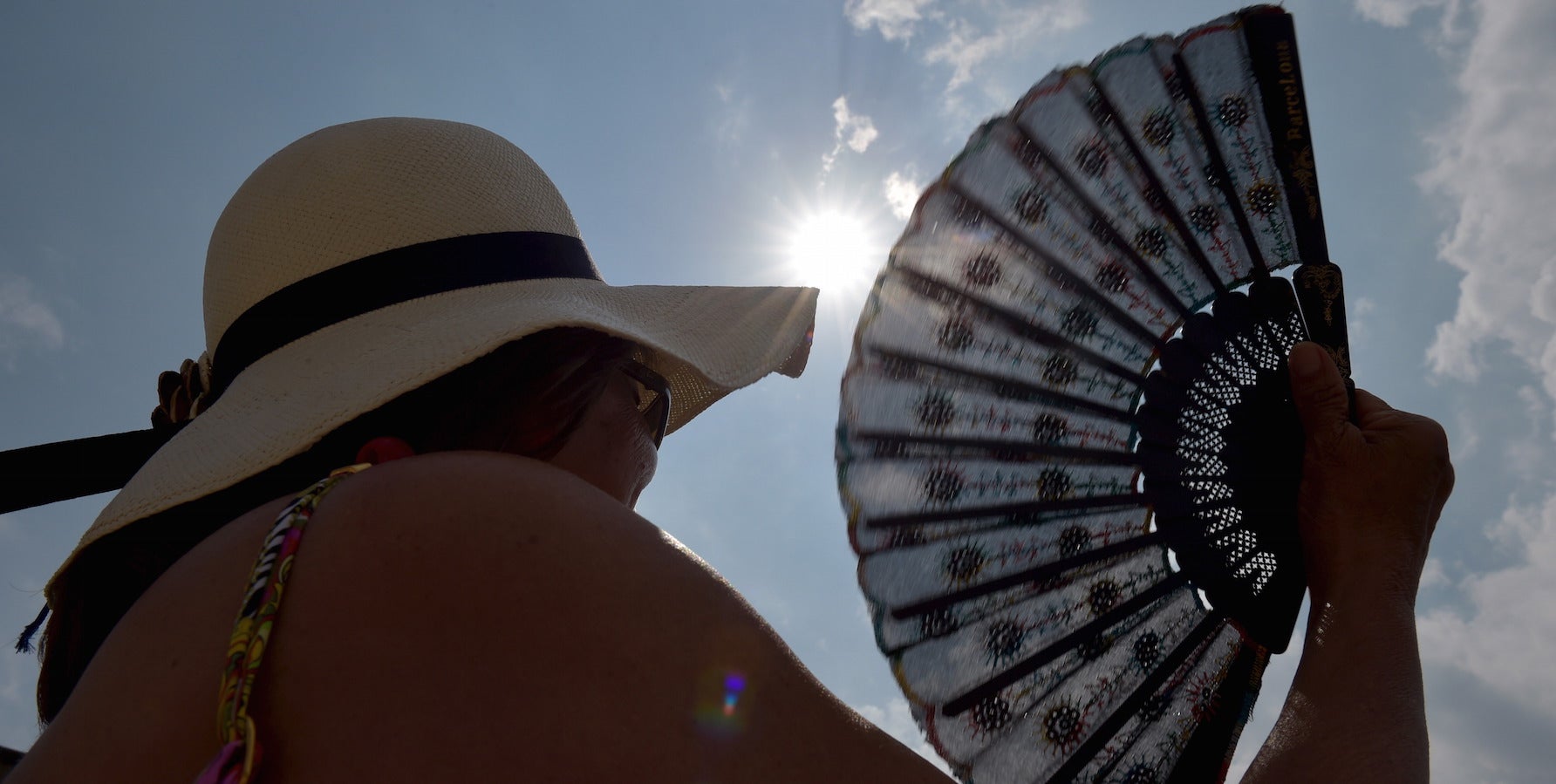How to stay cool this summer without maxxing out the air conditioner
Tempted as you may be to blast the air conditioning until you look like this, you might want to cool it.


Tempted as you may be to blast the air conditioning until you look like this, you might want to cool it.
In the US, A/Cs are responsible for 5% of electricity usage, and as countries get richer worldwide, it’s going to get worse. There’s a paradox here, of course: estimates suggest that the world’s A/C usage adds almost 500 million metric tons of carbon dioxide into the atmosphere per year.
With that in mind here’s a guide to life without (or with a lot less) A/C:
Keep your windows closed while it’s sunny
It may be tempting to keep your windows wide open during the day, for the chance of catching a stray breeze, but you’re basically turning your house or apartment into an oven.
Shut windows that receive direct sunlight, and draw the curtains or put down the blinds. According to the US Department of Energy, “medium-colored draperies with white plastic backings can reduce heat gains by 33%.” If you’re not keen on losing daylight, a sheer shade that blocks out UV light can be a good solution. And as the sun goes down, you can start to open the windows up again.
Change your lightbulbs
Incandescent and MR16 bulbs are less efficient than LEDs and they also give off heat. If you’re still dragging your feet on switching out your bulbs, this summer might be the time to finally make the change.
Be smart about when you run your A/C
Obviously, you shouldn’t leave your A/C blasting all day while you’re gone, but it may be just as harmful to come home and set it on 65F (18C) so the unit has to work extra hard to cool the room. Says LEED-certified architect Sandra Aranguren-Langston:
If it’s a really hot day, sometimes it’s better to have the A/C run at a higher temperature all day—instead of 68F, run it at 76F, with a slow fan. This keeps your air consistent, which is better than constant air changes that make the AC work harder.
Before you turn on your A/C, push hot air out
Another trick is to cool the room before you turn on your A/C. When you get home from work, for example, open a window in your bedroom (ideally one that’s high up) and place a fan opposite the window, angled up.
This will help push out hot air, which rises naturally on its own. You can also create a cross-breeze by opening two windows that are perpendicular, not parallel. Even better is a window and a skylight, which again will help push out the rising hot air. When the room has gotten a chance to cool down a bit, your A/C won’t have to work as hard to get the room to a comfortable temperature.
Use your hottest appliances wisely
Use major and electronic appliances—laptops, tablets, hair dryers—during the cooler times of day. And use them in the right places—it’s tempting to use laptops in bed before sleeping, but they create heat that will get trapped in your bedroom.
Cool your neck and wrists
Tie a cloth soaked in cool water around your neck and wrists. These are areas where there are big blood vessels close to the skin, which are ideal for cooling the blood in the rest of the body.
Eat spicy or hot foods
In many of the world’s hottest countries, like India, Mexico, and Thailand, it’s normal to eat hot and spicy foods or drink hot tea to beat the heat. These foods cause the body to sweat, and when sweat evaporates, the body then cools down. Evaporation is key to this trick, so you may not want to try it in extremely humid climates.
Seal your house up
If you want to invest long-term in keeping cool air in and hot air out, pay attention to how well your house is insulated in the wintertime. Put your hand near windows, openings, and joints and see if you can feel a draft. If so, seal the cracks or replace your window treatments with more efficient ones. You could even consider knocking out walls that are poorly insulated, Aranguren-Langston suggests.